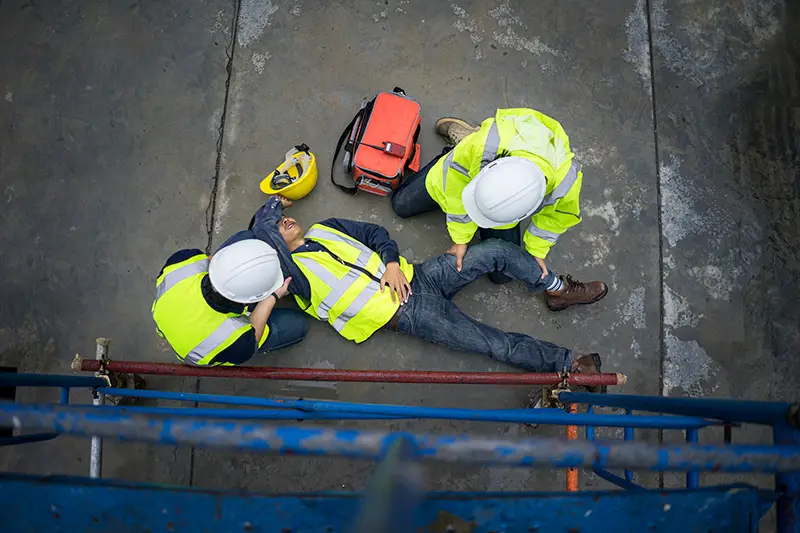Click here to get this post in PDF
The government agency responsible for compiling annual data on incidents of illness and injury in UK workplaces is the Health and Safety Executive (HSE). Thanks to the HSE’s annual publishing of occupational health data, and the volume of cases our team at Graham Coffey & Co. Solicitors pursues, we can identify the most common types of personal injury on construction sites.
Such information can highlight where workplace health and safety improvements are most needed and where construction employees need to be protected.
Fatal injuries in construction in 2022
In the period 2021/22, there were 30 workplace fatalities. This is lower than the 36 fatality average across the previous four years – but the causes of fatal injuries have largely remained unchanged, highlighting that they are avoidable if particular attention is brought to reduce the common hazards which cause them.
By far, the largest cause of death in construction is falling from a height – accounting for one in two deaths (51%) in construction. There is a clear need for improved safeguarding of employees needed to work from a height.
Before undertaking a work activity which requires working from a height, there must first be a thorough assessment of the risks. Important factors that determine the risk include the height of the activity, the duration and frequency, and the surface condition upon which the activity is to be carried out.
Those in charge of health and safety on the construction site must ensure that the following steps are followed:
- Avoiding working from a height where it is possible to do so. This means weighing the risk against the safety measures needed to control the risk.
- Preventing falls by ensuring the place of work and equipment is safe
- Reducing the distance of the fall, and using the correct equipment to minimise the consequences of a fall
Always prioritise collective protection measures over individual protection measures for each step.
Equipment that provides collective protection does not require the person working at heights to take any action in order for it to be effective. This includes tower scaffolds, scissor lifts, and permanent or temporary guardrails.
Personal protection equipment requires the person at height to use it; such as putting on a safety harness properly and attaching it to a suitable anchor point with an energy-absorbing lanyard.
Non-fatal injuries
Over the three-year period 2019/20-2021/22, there were an average of 59,000 annual non-fatal workplace injuries. The rate of self-reported non-fatal injury to workers has been declining since the coronavirus pandemic.
The most common non-fatal injury – accounting for 26% of all injuries – were slips, trips or falls on the same level. These injuries are frequently the result of a lapse in concentration or attention, which can cause someone to fall over something. This is particularly true in settings like construction sites and warehouses, where potentially hazardous objects are constantly moved around.
This injury is often a result of hazardous flooring or ground – which could be made unsafe by a spill or leak. For this, consider using entryway mats that provide adequate grip, even in dirty or damp conditions. Anything causing a hazard must be immediately tended to, which means repairing any leaks in equipment or structures. If there is lots of movement on site, there should be planning of routes for vehicles and pedestrians to steer clear of hazardous regions.
Even though safety measures are implemented, the risk of injury is inevitable. That being said, in some cases of occupational safety, there may have been a lack of care or safeguarding, which led to a worker sustaining an injury – for which the victim may be liable to claim compensation. To understand whether a victim is eligible for legal action, they should seek the advice and guidance of experts in construction site safety, such as the specialist team at Graham Coffey & Co. Solicitors.
By Stuart Snape, Managing Partner at Graham Coffey & Co. Solicitors
You may also like: What Are the Most Common Workplace Injuries?
Image source: Shutterstock.com

